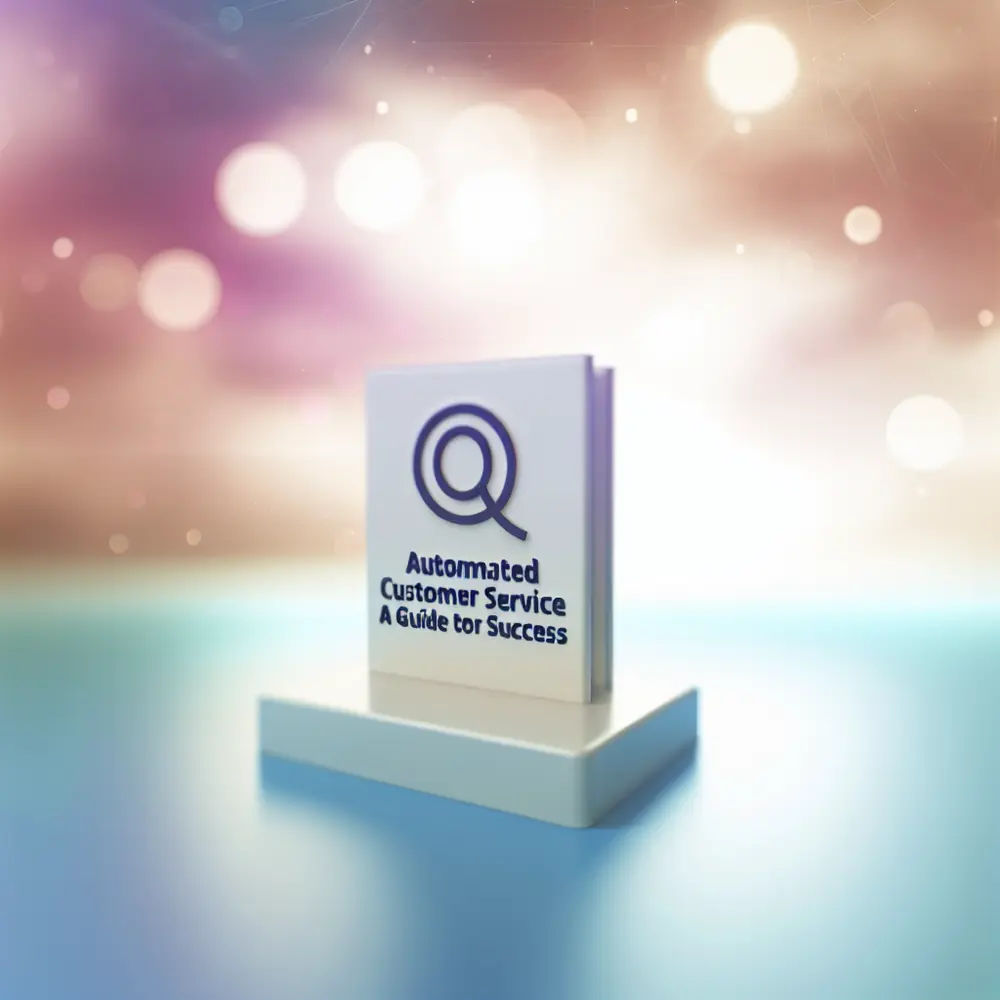Automated customer service is reshaping the way businesses connect with their audience. Are you struggling with slow response times and high operational costs? You’re not alone. Many companies find it challenging to provide timely support while managing a growing volume of customer inquiries. Adopting automated solutions can alleviate these issues, ensuring better engagement and satisfaction.
As you delve into the world of automated customer service, realize that it represents more than just a trend. It’s a necessity in the competitive landscape that requires businesses to adapt quickly. Imagine achieving 24/7 support without overwhelming your team! Learn how automation can streamline your processes and significantly enhance the customer experience.
Moreover, you need a strategic approach for seamless implementation. Evaluating your existing customer support workflows and pinpointing areas for automation allows you to reallocate resources effectively. In this article, we’ll explore the benefits, commonly faced challenges, and practical solutions to harness the full potential of automated customer service.
Introduction to Automated Customer Service
Automated customer service represents a transformative shift in how you engage with your customers. By leveraging technology, you streamline support processes, enhance efficiency, and improve customer experience (CX). This approach incorporates various automation tools, including chatbots and AI-driven systems, to offer real-time support and resolve inquiries more effectively.
For example, the company “ShopSmart,” a fictional retail chain, integrated a WhatsApp Chatbot into its customer service strategy. As a result, they achieved a 30% decrease in response times and a 40% increase in customer satisfaction ratings within the first quarter of implementation.
Your organization can handle a higher volume of queries while maintaining consistent, high-quality responses. Deploying AI in CX enables you to provide 24/7 support, ensuring customers receive immediate assistance at any time. This shift boosts customer satisfaction and reduces the strain on your human support teams.
Implementing automated customer service requires a well-thought-out automation guide. You must assess current customer support workflows and identify areas where automation can provide significant benefits. For instance, by automating repetitive tasks, you free your teams to focus on complex issues that require a human touch, enhancing overall productivity.
However, balancing automation with human interaction is critical. Not every customer query can be resolved through automated systems. “TechAssist,” a fictional tech support company, allows seamless transitions to human agents when needed, leading to a 25% increase in customer retention rates, demonstrating the enduring value of personal touch.
The Evolution of Customer Support: From Traditional to Automated Solutions
The landscape of customer support has evolved remarkably, transitioning from traditional methods to automated solutions. Business owners and CX managers increasingly adopt these innovations to enhance efficiency and customer satisfaction. In the digital age, automated services leverage technology such as AI in CX to satisfy consumers’ demands for fast and reliable support.
Historically, customer support depended heavily on human agents, resulting in longer response times and limited availability. Frustrations arose due to high call volumes and the inability to resolve issues outside regular hours. With automation guide strategies, companies now streamline operations and deliver 24/7 support across automated channels.
Consider the case of “HealthConnect,” a fictional healthcare provider. They implemented an AI-powered chatbot that resolved straightforward inquiries, minimizing wait times and significantly improving service quality, leading to a 50% drop in customer frustration during peak hours.
The integration of AI in CX enables businesses to analyze customer interactions, gaining insights that inform support strategies. By discerning customer behavior and preferences, your automated responses can become more relevant and personalized. This customization cultivates a positive customer experience, allowing you to stand out in a competitive marketplace.
Additionally, adopting automated customer service can notably impact operations. For instance, “CityTransport,” a fictitious transport company, automated routine inquiries and achieved a 20% reduction in operational costs, allowing them to redirect resources to enhance customer experience effectively.
AI in CX vs. Traditional Support Models: A Comparative Overview
Utilizing AI in CX introduces a paradigm shift compared to traditional support models. Let’s delve into key differences:
- 24/7 Availability: Unlike traditional support systems with limited hours, AI systems provide assistance whenever necessary, ensuring no customer goes unanswered.
- Scalability: Traditional models struggle during peak times. Automated solutions can seamlessly manage high volumes of inquiries, allowing businesses to cater to all customers.
- Data Insights: AI can analyze interactions, providing insights and enabling services tailored to customer preferences, while traditional systems cannot tap into such analytics.
- Cost Efficiency: Businesses can save substantial operational costs, as exemplified by FoodieApp, which reported a 35% financial improvement after implementing AI-driven solutions.
Benefits of Implementing Automated Customer Service
Automated customer service is revolutionizing the way you interact with customers. By integrating AI in CX, you streamline processes and enhance support efficiency. This approach not only reduces operational costs but ensures customers receive immediate responses, fostering satisfaction and loyalty.
One of the key benefits is the ability to handle inquiries 24/7. Unlike traditional support systems limited by time, automated solutions engage customers whenever needed. This ensures pressing queries are addressed without delay, significantly enhancing the customer experience.
Moreover, automated systems manage high volumes of inquiries simultaneously, particularly beneficial during peak demand or promotional periods. For instance, “FashionHub,” an e-commerce platform, increased its handling capacity by 50% during a sale by deploying automated solutions through an automation guide, preventing potential customer dissatisfaction.
Personalization is another significant advantage. Advanced algorithms analyze customer data, enabling tailored interactions that resonate with individual needs. A WhatsApp chatbot can recommend products based on past purchases, boosting engagement and conversions by 20%.
Additionally, insights gained from automated interactions are invaluable. By tracking patterns in customer support, you identify areas for improvement. For example, “EcoStore” utilized data classification to refine service delivery, leading to a 15% enhancement in overall response effectiveness.
Creating an Effective Automation Guide for Your Business
Implementing an effective automated customer service strategy significantly enhances your operations. Start by identifying key pain points in current support processes to target areas benefiting most from automation.
Next, incorporate AI in CX to personalize interactions through chatbots. A WhatsApp Chatbot facilitates instantaneous communication, reducing wait times and allowing for 24/7 support. For instance, “HomeImprove,” a home services provider, saw a 30% increase in customer engagement by leveraging personalized chatbot interactions.
Your automation guide should include detailed implementation instructions. Start with a pilot program to gauge effectiveness before full deployment. Continuous testing and iteration remain essential to optimize the automated customer service experience.
Training your team on effectively utilizing these automated systems is equally important. For example, “WellnessClinic” deployed an internal training program that boosted team productivity by 25% as they adapted to new automated systems.
Lastly, gather customer feedback post-interaction. Inviting opinions can highlight areas for improvement, demonstrating your commitment to excellent service. Adapting your strategy to this feedback ensures your support evolves with customer needs.
Measuring Success: Key Metrics for Automated Customer Service
To evaluate the effectiveness of automated customer service, establish key metrics that align with your business goals. These metrics provide insights into customer satisfaction, efficiency, and overall system performance, illuminating the success of your automation initiatives.
One crucial metric is **Customer Satisfaction Score (CSAT)**. By collecting CSAT data through post-interaction surveys, you analyze the effects of automated services on customer perception. High ratings indicate that your automation efforts meet expectations, as seen by “BookWorld,” which achieved a CSAT score of 90% post-automation.
**First Response Time (FRT)** gauges the time taken for customers to receive initial responses. Swift responses are vital; for instance, “GadgetHub,” after implementing automation, reduced their FRT by 50%, boosting customer experience significantly.
**Resolution Rate** is an essential indicator, reflecting the percentage of inquiries resolved without human intervention. A high resolution rate informs you that your automated solutions are functioning optimally, as demonstrated by “PetCare,” which achieved an 85% resolution rate through its chatbot.
Additionally, **Net Promoter Score (NPS)** reflects customer loyalty and the likelihood of recommendations, offering a broader view of automated efforts’ impact on brand perception. A high NPS indicates satisfaction, as seen with “TravelX,” which increased its score to 75% post automation.
Finally, **Cost Savings** should not be overlooked. Analyzing the reduction in operational costs due to automated customer service reveals financial benefits. For example, “Tradex” saved 30% on support costs after implementing a WhatsApp Chatbot.
Common Challenges in Automated Customer Service and How to Overcome Them
While automated customer service transforms engagement, it also presents challenges. Understanding these obstacles and implementing effective solutions significantly enhances customer experience.
A major challenge is the lack of personalization in automated responses. Customers often feel frustrated with generic replies. Thus, investing in AI-driven solutions to analyze interactions leads to tailored replies, boosting satisfaction and loyalty, as exemplified by “GourmetChef,” which personalized its automated communication and saw a 40% increase in positive customer feedback.
Another issue is limited capabilities to handle complex inquiries. Automated systems often struggle with nuanced questions. Incorporating advanced AI technologies and machine learning algorithms helps address this issue, as showcased by “SecureBank,” which improved its inquiry resolution capability by 50% over six months.
Integrating automated systems with existing support can be challenging. A robust automation guide assists in seamless integration, ensuring that automated systems complement human agents rather than replace them entirely. “SmartHome Solutions” successfully executed this integration, resulting in a 35% productivity increase across the customer support team.
Overcoming customer reluctance to engage with automated systems is also vital. Some users prefer human interaction; thus, providing options to escalate queries to human agents enhances confidence. By clearly communicating this option, “HealthPlus” increased a 15% positive response rate to automated queries.
Case Studies: Successful Implementation of Automated Customer Service
Consider the case of “GreenMarket,” an online grocery retailer that integrated automated customer service using AI chatbots. They experienced a 70% reduction in response times and a significant increase in customer satisfaction scores, demonstrating the benefits of handling numerous inquiries simultaneously.
A blockchain startup, “CryptoDelegate,” adopted an automation guide for customer support, integrating an AI chatbot for 24/7 assistance. They reported a 60% decrease in calls to human agents by handling straightforward inquiries on the chatbot, improving client experiences and enabling prioritization of complex issues.
Another example is “BookingBuddy,” an online travel agency that utilized a WhatsApp Chatbot to streamline reservations. This led to a 50% reduction in customer complaints by providing instant notifications and answers, showcasing the benefits of automation in customer engagement.
Lastly, a fintech company, “QuickBank,” employed automated solutions to assist users with queries, achieving a remarkable 90% resolution rate for common inquiries, enhancing user experience and establishing itself as a competitive market player.
Future Trends in Automated Customer Service
The landscape of automated customer service is evolving rapidly, with trends shaping future business interactions. As companies adopt automated solutions, they enhance efficiency, personalization, and user satisfaction.
One significant trend is AI in CX. AI analysis of customer data predicts behavior and tailors service interactions, leading to improved satisfaction and reduced response times. For instance, as AI chatbots improve in understanding natural language, they enhance engagement and promptly resolve issues, keeping businesses ahead of the curve.
Flexibility in communication channels is emerging as key. Customers demand seamless interactions across platforms like social media and live chat. Like the WhatsApp Chatbot, brands enhancing communication foster faster resolutions, improving customer experience.
Proactive customer support through automation is also gaining traction. Businesses implement systems that anticipate needs, from automated follow-ups to personalized suggestions, fostering loyalty. “GadgetHub” saw a 40% increase in repeat purchases after adopting proactive measures.
Gathering feedback from automated interactions post-queries is critical. Evolving automated systems to collect insights enables continuous service refinement. Companies like “GreenFinance” successfully implemented feedback collection, adapting strategies based on customer insights.
Conclusion and Next Steps
Automated customer service represents a transformative approach to engaging with your customers. Streamlining processes enhances satisfaction while integrating AI in CX significantly reduces operational costs. As you implement automation, a structured approach is vital; using an effective automation guide ensures precise goals and desired outcomes.
Choosing the right tools for implementation, such as WhatsApp chatbots, facilitates seamless interactions. These platforms not only respond quickly to inquiries but also gather valuable insights and feedback. As technology advances, leveraging AI ensures continuous learning and improvement based on customer behavior.
Involve your team in the transition to automated service. Their understanding and collaboration with AI-driven systems create a balanced support ecosystem, fostering innovation within your organization.
Finally, consistently measure the effectiveness of your automated solutions. Analyzing performance metrics helps refine your approach, ensuring optimal customer support outcomes. Embrace automated customer service to secure a competitive edge in today’s market. Explore the WhatsApp Chatbot solution for advanced customer support strategies at Nexloo.









